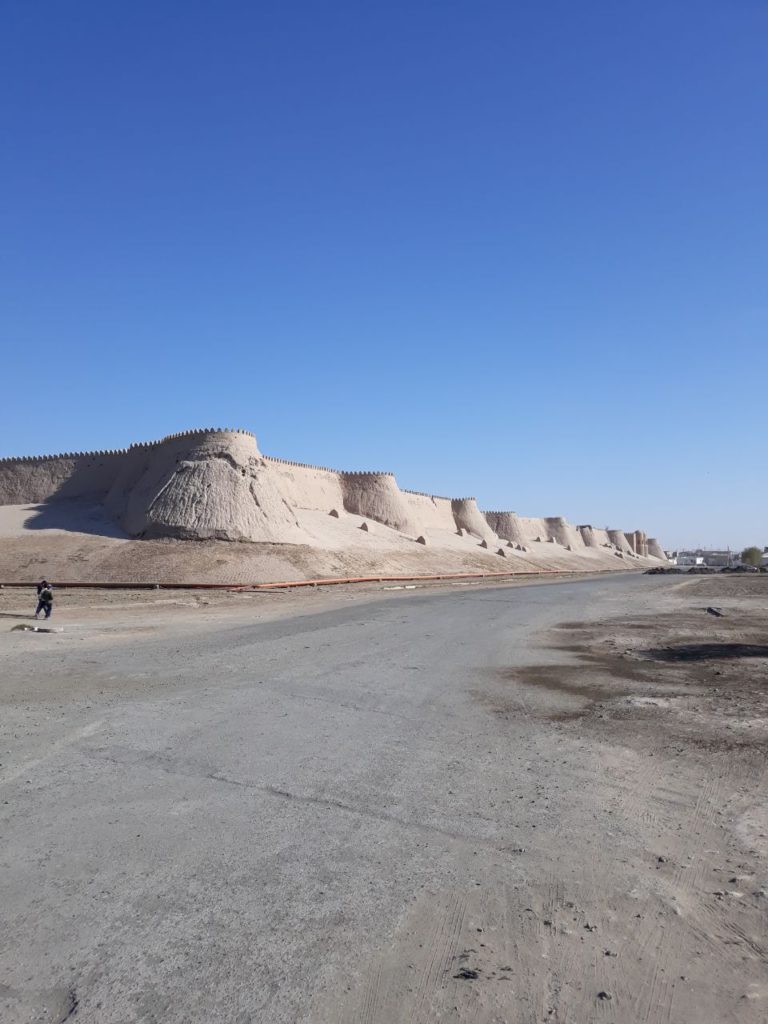In accordance with the Uzbekiston Beylab Sayogat Uil Internal Tourism Development Program, on November 16-18, 2018, the Central HGE State Tourist Organization organized a tourist trip to the city of Khiva, in which 26 tourists took part. Travel to Urgench was carried out by rail, and the transfer from Urgench to Khiva – on a comfortable tourist bus Yutong. Upon arrival in Khiva, excursionists were placed in double rooms of the Madras Aminhan Hotel.
The whole excursion part of the route around the city was accompanied by a professional guide. On the first day, sightseers walked along the southern part of the street, where the representative complex of the Muhammad Amin Khan madrasah is located with the unfinished minaret Kalta-Minor, the next one is the Matniyaz Divan-begi madrasah and in the depths behind them is the mausoleum of Seyid Allauddin and others
On the second day, the Pahlavan-Makhmud Complex was visited, which is the most prominent of Khiva memorials that took place at the burial place of the famous Khiva poet Pakhlavan-Makhmud (1247-1325); Khan’s palace Tash-khauli (1830-1838) – “stone manor”, “stone courtyard” – the traditional forms of the Khorezm country estate, combined with some principles of urban dwelling planning, are repeated in the architecture of the khan’s palace; Kazi –Kalyan Madrasah; Muhammad Rahim Khan Madrassah; Caravanserai; Cathedral Juma mosque, minarets at mosques, etc.
Museums of the city located on the territory of the city were also visited.
When you walk along the streets and squares of Khiva, it is difficult to get rid of the feeling that you are in the historical past. The integrity and intactness of the protected urban ensemble are striking. In a relatively small area, sandwiched by the fortress walls, there are several dozen madrasahs and mosques, palaces, minarets, sanctuaries, hundreds of flat roofs, clay fences, cornices of raised aivans – all this is squeezed into a dense ball, interwoven and layered, in a cursory glance, unsystematically . The heap of walls is cut through by gorges of streets and alleys, and the impudent vertical of the minaret rises to the sky.
Architects and builders everywhere demonstrated the mastery of spatial solutions, erecting urban ensembles amazingly related to parts.
This is exactly the city that is sad to leave, and I want to return to it again.















